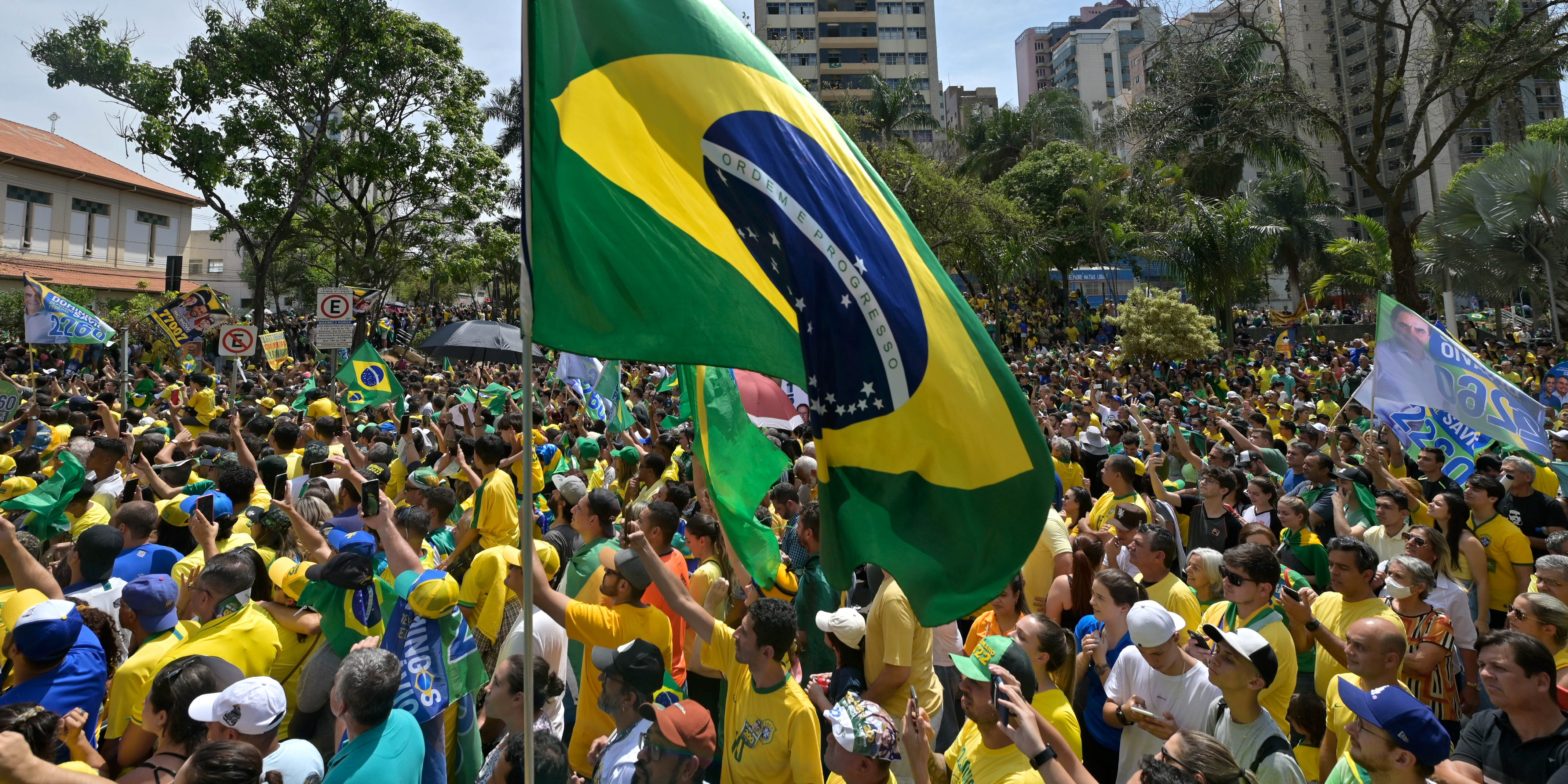Brazil’s real and Mexico’s peso are standout currencies this year in managing to rise against the dollar. Relatively high yields in the emerging market economies are among the factors that make the currencies attractive. But risks loom in worries about global recession and Brazil’s presidential election. Loading Something is loading.
While the US dollar has broadly boomed this year – including gains of more than 20% against G10 currencies the yen and the pound – it has fallen against the emerging market currencies of Brazil and Mexico, but there are emerging risks to their advances, analysts say.
This year, Brazil’s real has risen by roughly 4%, leaving the dollar to buy 5.34 reals as of Friday. Mexico’s peso has gained 2%, with the greenback trading at 20.08 pesos.
“The reason why those two currencies have been resilient in comparison to everything else has to do with the fiscal realities of the negative effects of war,” Juan Perez, director of trading at Monex USA, told Insider, referring to Russia’s invasion of Ukraine seven months ago.
“In a sense, now currencies more than ever before are a gauge and a measure of a country’s ability to manage its raw materials and resources at a time when too many negative items have smacked the globalized system,” he said.
But the currencies from the Western Hemisphere aren’t free from vulnerabilities including economic and political considerations.
Here’s a look at what’s driving the real and the peso.
Brazilian real
The real’s advance against the dollar narrowed this week as Brazil prepared to hold its first round of general elections starting Sunday. The marquee race is a contentious presidential contest between Jair Bolsonaro, Brazil’s current right-wing president and a former military officer, and former President Luiz Inacio Lula da Silva, a left-winger who had served prison time for corruption charges after his term ended in 2010.
“Projections that Lula could win in the first round seemed to weigh on sentiment,” with the dollar this week reaching close to two-months highs around 5.40 reals, wrote Marc Chandler, managing director at Bannockburn Global Forex, in a note.
Should Lula emerge as the winner, the near-term direction for the real would be swayed by two factors, said Perez. Lula, who has denied any wrongdoing, would need to pledge that Brazil will have a fair and open business environment, and the transfer of power needs to be friction-free.
“The presidential transition needs to be smooth because part of Bolsonaro’s fan base is kind of threatening the very idea that these are legitimate elections, that the result is going to be the accurate one. If there is turmoil in that sense, expect the real to plummet.”
Political turmoil could push the dollar up to 5.50 reals for the next month or so but calmer waters could see the dollar move down to 5.20 reals, said Perez. Edward Moya, senior market analyst at Oanda, also sees short-term weakness as pushing the dollar to the range of 5.50 reals.
“Overall … the real is still somewhat viewed as an attractive EM bet,” Moya told Insider. “There’s a lot that’s wrong with the Brazilian economy, [however] some of its exports are still heavy in demand. There has been some benefit for soy and soft commodities. There are still a lot of currency traders that just can’t pass up that yield.”
While the Federal Reserve’s aggressive path of rate hikes has fed dollar strength and fueled a jump in the US 10-year Treasury yield toward 4%, Brazil’s 10-year bond yield was 12% as of Friday.
“As far as EM goes, Brazil is one of the favorite trades. It’s going to outperform Colombia, Chile and pretty much most of Latin America,” Moya said.
Mexican peso
“Mexico has been one of the key currency trades that a lot of people view as stable as emerging markets go,” said Moya.
Advantages for Mexico include its status as an oil producer and that is has the US as a major trading partner. Also, the Bank of Mexico has been more aggressive about raising interest rates to confront inflation than many other global central banks.
The Bank of Mexico this week increased its overnight interest rate target to 9.25% from 8.5%, the 11th consecutive rate hike since June 2021, as inflation has climbed to a two-decade high above 8%.
“They’ve taken their interest rate fairly high, and they’re still on the tightening path,” said Moya. In a similar fashion to Brazilian yields, Mexico’s 10-year bond yield stands above the 10-year Treasury yield, at just above 10% on Friday.
Moya said the peso could run out of steam in the short-run.
“Investors are becoming more pessimistic about a global recession … you’re probably going to see investors are expecting a deterioration in economic data.” That could mean the greenback rising to around 20.45 pesos, he said.
Perez at Monex is sticking with its six-month outlook of 20 pesos to the dollar, noting swings in the peso can be dramatic. “The peso is going to be a gauge of the debate globally about whether we’re headed towards a more gloomy-doomy situation post-pandemic or if where we’re going to start recovering.”
